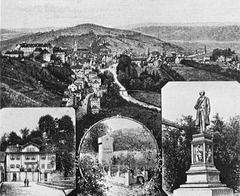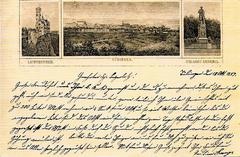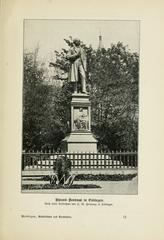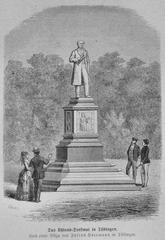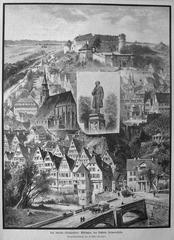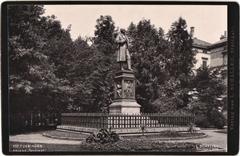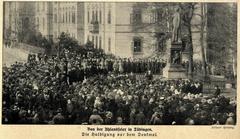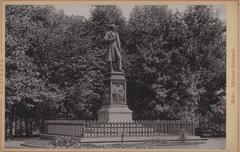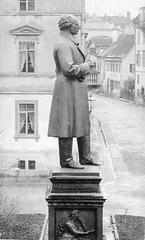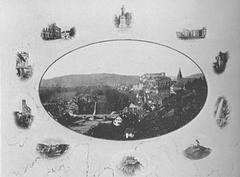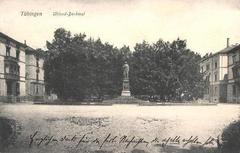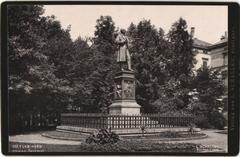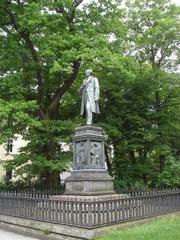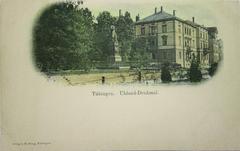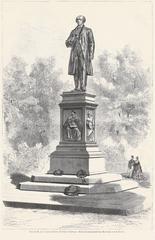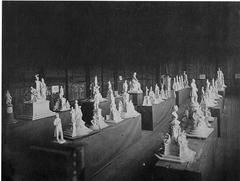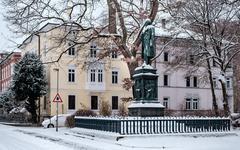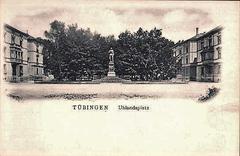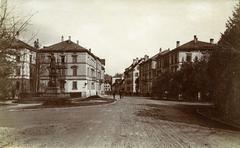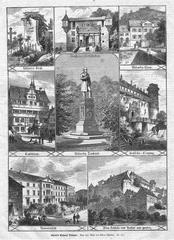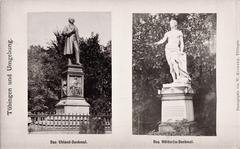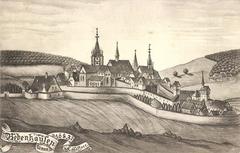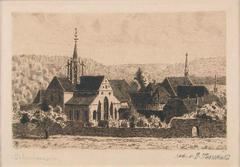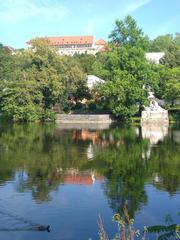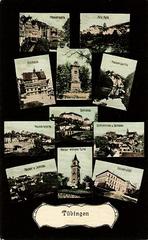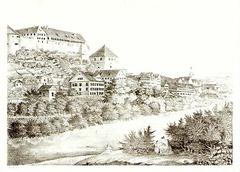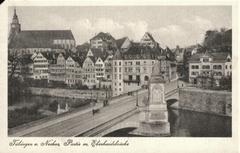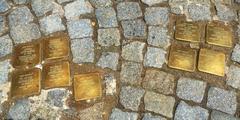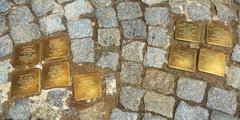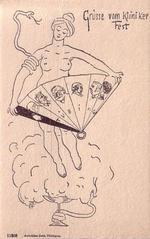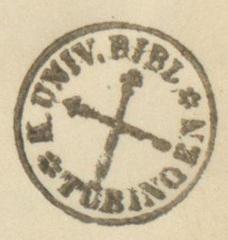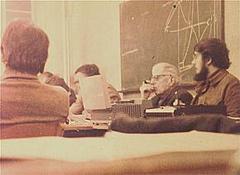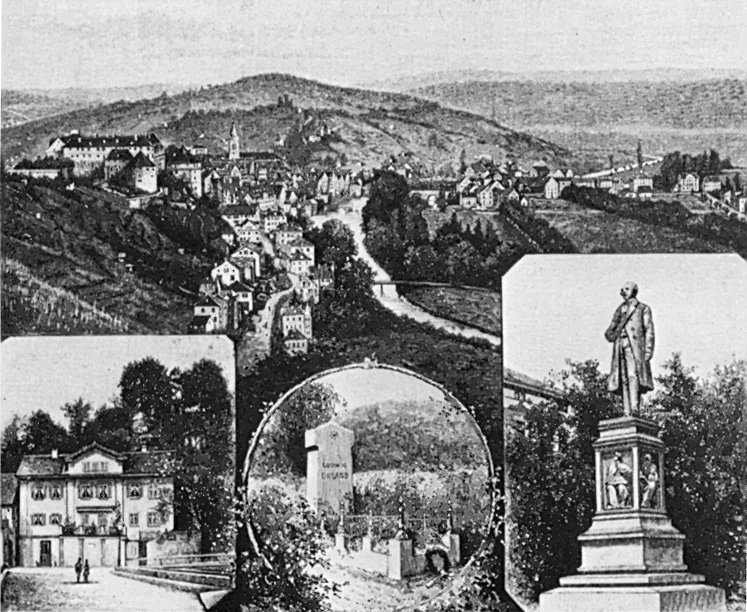
Uhlanddenkmal Visiting Hours, Tickets, and Guide to Tübingen Historical Sites
Date: 14/06/2025
Introduction
The Uhlanddenkmal in Tübingen, Germany, stands as a distinguished tribute to Johann Ludwig Uhland (1787–1862)—a central figure in German Romantic poetry, philology, and 19th-century political activism. Located in the city’s historic center, this monument not only commemorates Uhland’s enduring literary and scholarly legacy but also symbolizes Tübingen’s rich cultural and intellectual heritage. As a freely accessible outdoor landmark, the Uhlanddenkmal is open year-round and offers visitors a unique glimpse into Germany’s literary and historical traditions.
This comprehensive guide delves into the monument’s historical background, artistic features, and practical visitor information, including accessibility, opening hours, ticket details, and travel tips. You’ll also find advice on integrating the monument into walking or cycling tours, insights into nearby attractions such as the Neckarinsel and Hohentübingen Castle, and suggestions for making the most of your visit to Tübingen’s historical core.
For further updates and official information, consult resources such as Tübingen Tourism and Tüpedia.
Table of Contents
- Introduction
- Historical Background of the Uhlanddenkmal
- Visiting the Uhlanddenkmal: Hours, Tickets, and Accessibility
- Location and Travel Tips
- Integrating the Uhlanddenkmal in Walking and Cycling Tours
- Nearby Attractions
- Cultural Events and Preservation
- Photo Opportunities
- Frequently Asked Questions (FAQ)
- Additional Resources and Links
- Conclusion and Call to Action
Historical Background of the Uhlanddenkmal
Origins and Purpose
Erected in 1873, a decade after Uhland’s death, the Uhlanddenkmal honors his contributions to literature and his role as a political reformer during a period of burgeoning German nationalism (Tüpedia). The location, near the main approach from Tübingen’s train station, highlights its significance in welcoming visitors to the city’s rich cultural landscape.
Ludwig Uhland: Life and Achievements
Born in Tübingen, Uhland was an accomplished poet, lawyer, and professor. His poetry collection “Gedichte” (1815) brought him national acclaim, and he became known for his advocacy of democracy and civil liberties. He served in the Württemberg Landtag and the Frankfurt National Assembly, upholding principles of unity and freedom (Britannica).
Artistic Features and Symbolism
The monument, designed by Gustav Adolph Kietz (a student of Ernst Rietschel), features a bronze figure of Uhland in a contemplative pose, holding a book to represent his scholarly legacy. The stone pedestal is adorned with three reliefs:
- Germania Relief: Symbolizes the grief over the lost unity of the German Reich, echoing popular 19th-century motifs.
- Poetry and Science Reliefs: Highlight Uhland’s dual legacy as both a creative artist and an academic.
- Inscription: Reads “Dem Dichter – dem Forscher – dem deutschen Mann – das dankbare Vaterland” (“To the poet – to the scholar – to the German man – the grateful fatherland”), reinforcing his national importance (Tüpedia).
The monument is surrounded by a square metal fence, giving it a dignified presence.
Visiting the Uhlanddenkmal: Hours, Tickets, and Accessibility
- Visiting Hours: Open 24 hours a day, year-round; there are no specific visiting hours.
- Tickets: No admission fee; access is entirely free.
- Accessibility: The site is wheelchair accessible, with smooth pedestrian paths and benches for resting. The recently restored Bahnhofallee walkway offers easy access from the train station (Helga and Heini on Tour).
Location and Travel Tips
Getting There
The Uhlanddenkmal is located at Platz der Stadt Monthey, along Uhlandstraße. It is within walking distance (about 10–15 minutes) from Tübingen’s main train station and the old town center. Public buses stop nearby, and there are several parking options close to the city center (Tüpedia).
Best Times to Visit
Visit in the early morning or late afternoon for soft natural light and fewer crowds. Spring and summer offer the most pleasant weather for sightseeing (The Spicy Journey).
Accessibility
The monument and surrounding park are flat and accessible for wheelchairs and strollers. Nearby public restrooms and cafés are available in the old town.
Integrating the Uhlanddenkmal in Walking and Cycling Tours
Walking Itinerary
Start your city tour at the Eberhardsbrücke for views of the Neckarfront, continue along Neckarinsel, and reach the Uhlanddenkmal within 15 minutes. The route is well signposted and offers scenic resting spots (Global Travel Escapades).
Cycling Route
The Uhlanddenkmal is a highlight on the 18 km “Uhlanddenkmal – Tübingen Runde von Tübingen-Lustnau” cycling route, combining riverside paths and urban scenery (Komoot). Suitable for most fitness levels, the route integrates natural and historical attractions.
Nearby Attractions
- Neckarinsel: A tranquil island park with shaded paths.
- Marktplatz and Rathaus: The city’s vibrant center, perfect for shopping and dining.
- Hohentübingen Castle: A short uphill walk offering panoramic views and the Museum of Ancient Culture (Velvet Escape).
- University of Tübingen: Explore campus museums and historical buildings.
Cultural Events and Preservation
The Uhlanddenkmal serves as a venue for literary readings, student celebrations, and civic commemorations. While there are no regular festivals solely dedicated to Uhland, special events are occasionally organized in his honor. The monument is protected as part of Tübingen’s ensemble of cultural monuments, with regular maintenance ensuring its preservation (Wikipedia).
Photo Opportunities
Capture the monument during the golden hour or during local festivals for the best photos. The leafy square and nearby Neckar provide beautiful natural backdrops. Look for angles that highlight the bronze reliefs and the monument’s integration into the cityscape.
Frequently Asked Questions (FAQ)
Q: Is there an entrance fee?
A: No, the monument is free to visit at any time.
Q: What are the visiting hours?
A: Open 24/7, year-round.
Q: Is the Uhlanddenkmal wheelchair accessible?
A: Yes, the site and surrounding pathways are wheelchair friendly.
Q: Are guided tours available?
A: Yes, many local walking tours include the Uhlanddenkmal. Check with the Tübingen tourist office (Tübingen Info).
Q: Can I take photographs?
A: Yes, photography is permitted and encouraged.
Practical Tips
- Best Time to Visit: Spring and summer for outdoor activities; early morning or late afternoon for photography.
- Facilities: Benches, nearby cafés, and public restrooms available in the old town.
- Picnicking: The park area around the monument is perfect for a picnic.
- Guided Tours: Enhance your visit with a guided walking or cycling tour.
Additional Resources and Links
- Tübingen Tourism
- Tüpedia: Uhland-Denkmal
- Komoot Cycling Route
- Stuttgart im Bild: Denkmal für Ludwig Uhland
- Alamy: Artistic Features
- Rough Guides: Tübingen Overview
- Global Travel Escapades: Things to Do in Tübingen
- JustIn Plus Lauren: Things to Do in Tübingen
- The Spicy Journey: Tübingen Guide
- Helga and Heini on Tour: Tübingen Sights
- Velvet Escape: Things to Do in Tübingen
- Online Destination: Uhland-Denkmal in Tübingen
- Germany Footsteps: Things to Do in Tübingen
Conclusion and Call to Action
The Uhlanddenkmal stands as a powerful symbol of Tübingen’s literary, academic, and civic traditions. As a free, accessible, and beautifully crafted monument, it should be on the itinerary of any visitor interested in German history and culture. Whether you explore independently, as part of a guided tour, or while cycling through Tübingen’s scenic landscapes, the Uhlanddenkmal offers a meaningful and memorable experience.
Plan your visit today by checking the latest event schedules and guided tour options through the official Tübingen tourism website or the Audiala app. Follow us on social media for more travel tips, inspiration, and updates on Tübingen’s vibrant cultural scene.
